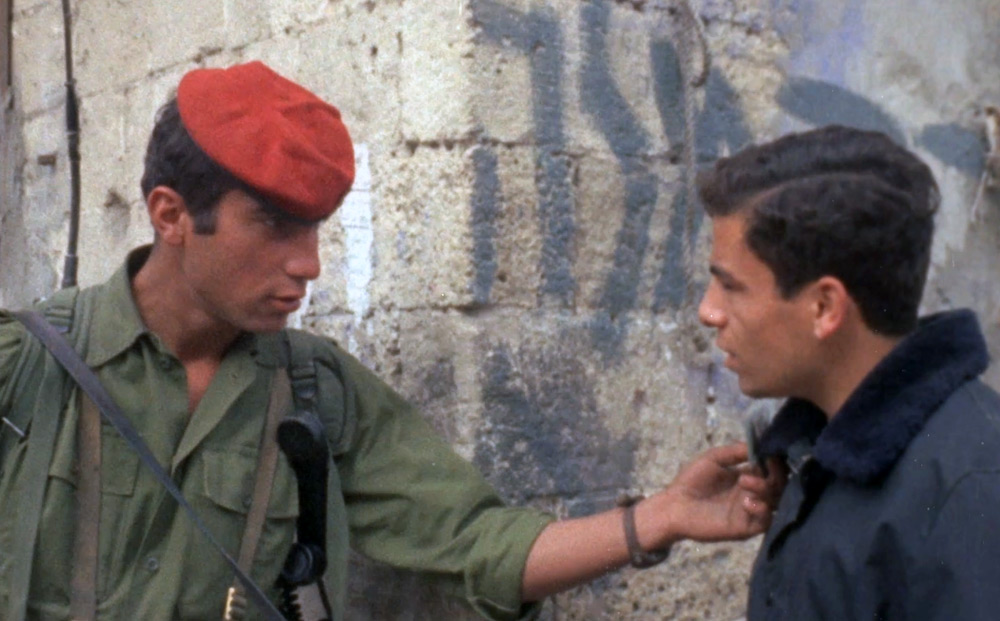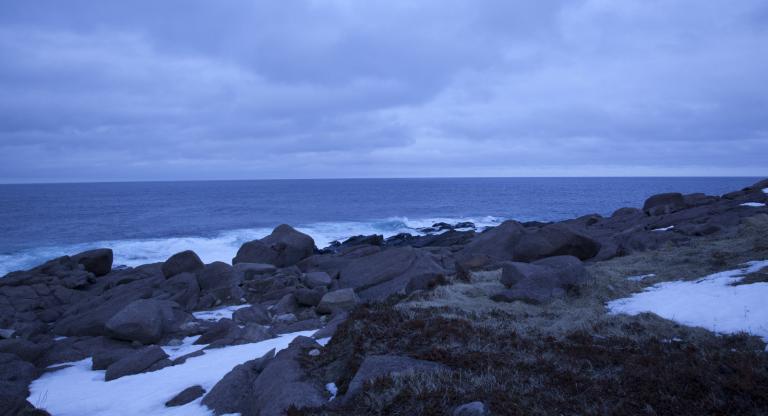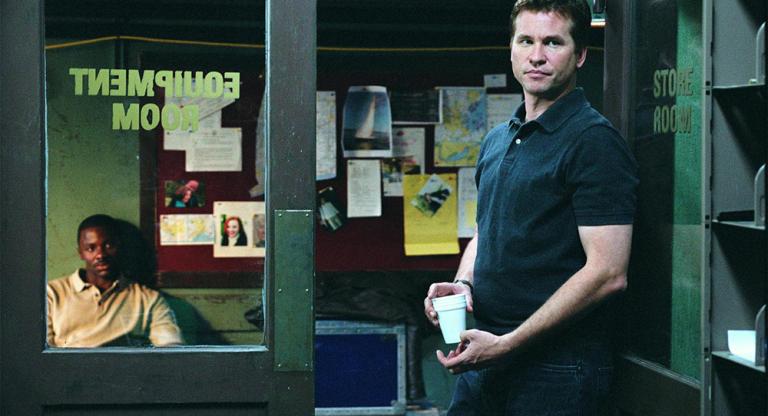I’m a sucker for epic-length nonfiction cinema. Trips to see Chris Marker’s Grin Without a Cat (1977) in Film at Lincoln Center’s series commemorating the 40th anniversary of May 1968, or Connie Field’s eight-and-a-half hour Have You Heard From Johannesburg? at Film Forum in April 2010, were formative in my student years. So I approached Göran Hugo Olsson’s 200+ minute Israel Palestine on Swedish Television 1954-1989 with a healthy mix of excitement and trepidation. Olsson’s breakout 2011 doc, The Black Power Mixtape 1967-1975, was built from fascinating news footage of key players in the Black Power movement, threaded with talking-head commentary from surviving activists and added voice-over from activist-musicians such as Erykah Badu, Talib Kweli, and Questlove. Olsson’s even more acclaimed follow-up, Concerning Violence (2014), took newly unearthed 16mm footage from African anticolonial struggles in the ‘60s and ‘70s and paired it with readings from Frantz Fanon’s essay of same name, with Lauryn Hill delivering voice-over in the American version. The result was a kind of illustrated audiobook, comparable to the way Raoul Peck’s more formally schizophrenic I Am Not Your Negro (2016) served as a James Baldwin digest for beginners. Both movies were able to exist only because Olsson had privileged access to the archives of Sveriges Television AB (shortened to SVT), a state-backed news service that invested significant resources in war journalism and vérité reportage; whatever misgivings one might develop about Olsson as a film essayist, the lure of heretofore unseen primary source material is understandable.
But if Olsson’s signature talent has been making dry historical documentation more accessible for wider audiences, Israel Palestine is more ambitious, and it’s impossible to ignore the authorial tension between STV and the filmmaker. I clocked at least one historical inaccuracy important enough to call the film’s overall seriousness into question: over an interview clip purportedly from 1966, superimposed text identifies Golda Meir as “Prime Minister of Israel” three years before her election. In 1970, the Popular Front for the Liberation of Palestine hijacked four airliners heading to New York City, three of which ultimately decamped at Dawson’s Field, in Jordan; Olsson’s onscreen text bizarrely refers to this as “the hijacking drama in Jordan” with no further context given. In terms of form, the filmmaker only puts his thumb on the scale a couple times, the most embarrassing of which is a needle-drop of “Angel” by Massive Attack, played over footage of Israeli bombardments during the Six-Day War of 1967. (“Angel” is the only pop music used in the film, anachronistic or otherwise… Maybe there’s a clue in the fact that one of the TV narrators is then heard using the phrase “massive attack” in his broadcast?) Garden-variety typos and grammatical errors also abound.
Nevertheless, Israel Palestine on Swedish Television 1954-1989 deserves to be seen. It testifies to the importance of public broadcasting and offers a chance to track the evolution of European public opinion toward Israel’s illegal occupation of (and expansion into) Palestine, restoring detail to the long evolution of a crisis which is today at its worst point in history. STV’s coverage runs the gamut, from blatant Zionist propaganda to impressively considered interviews with freedom fighters and intellectuals. On-the-ground interviews with Palestinians and Israelis give a human face to the breakdown between expectations and reality that’s been too often handled by the Kissingers, Brzezinskis, Clintons, Kushners, et al., as an abstract geopolitical puzzle. Olsson’s many “unforced errors” as a filmmaker demonstrate just how malleable this kind of reportage is, all the more fascinating given the long slippage in journalistic standards that has played out since the end of the era chronicled here. (Put differently: the biases inherent in STV’s coverage of Israel are hard to ignore, but this stuff is still far more nuanced than anything we’ll ever get in the States.)
I left Israel Palestine on Swedish Television 1954-1989 with two odd, parallel sensations. One was a renewed skepticism toward the framing of mainstream news narratives, a recommitment to resisting easy narrative. The other was disquiet after yet another reminder of just how long this bloody, genocidal occupation has been happening in full view of the “world community”, and how the current Zionist regime is further to the right than it was under Moshe Dayan or Ronald Reagan. Beyond hours and hours of fascinating footage—which could be cut any number of ways—this is the best thing Olsson’s film has going for it: it demonstrates that there’s no guarantee incontrovertible evidence can change anything on the ground for the people who need it to change.
Israel Palestine on Swedish TV 1958-1989 screens Sunday afternoon, October 19, at the Roxie with director Göran Hugo Olsson in person.
Previously:
Israel Palestine on Swedish TV 1958 - 1989 screens this afternoon, October 11, and until October 16, at Film Forum. Director Göran Hugo Olsson will be in attendance for a Q&A tomorrow afternoon.



